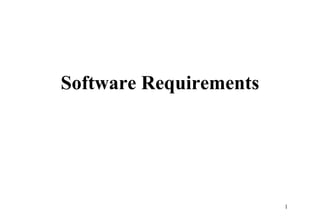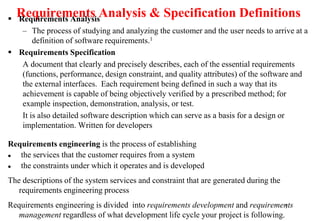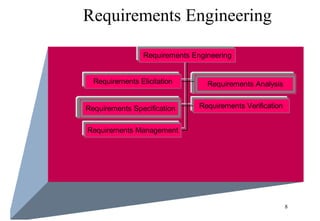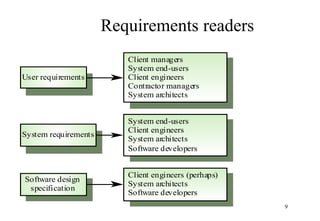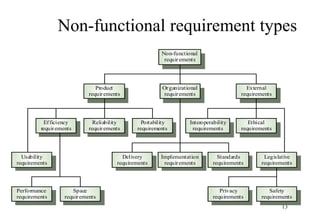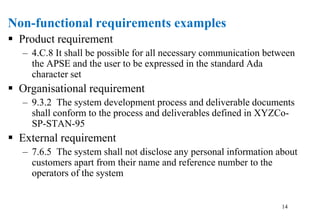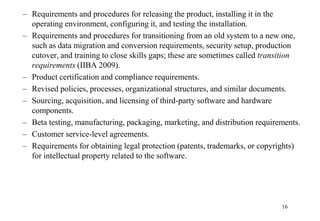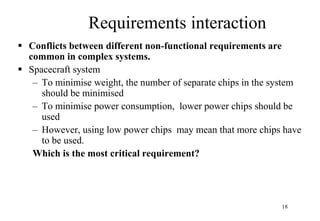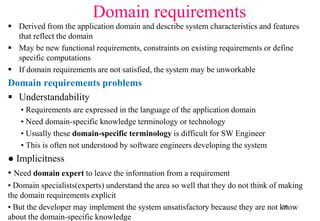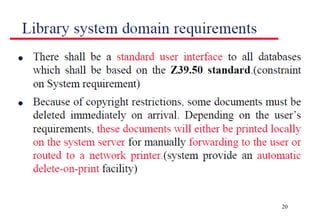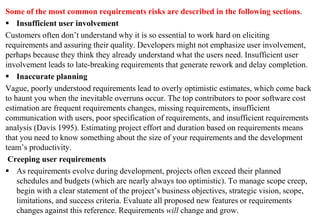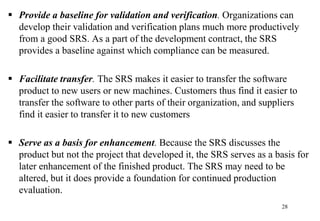The document discusses software requirements and their importance. It defines requirements as specifications of what a system should implement. Requirements include functional requirements that describe system services and non-functional requirements that constrain the system or development process. User requirements are high-level descriptions written for users, while system requirements provide more detailed specifications. An effective software requirements specification establishes agreements between customers and developers, reduces defects, and provides a baseline for project planning, validation, and future enhancements.
